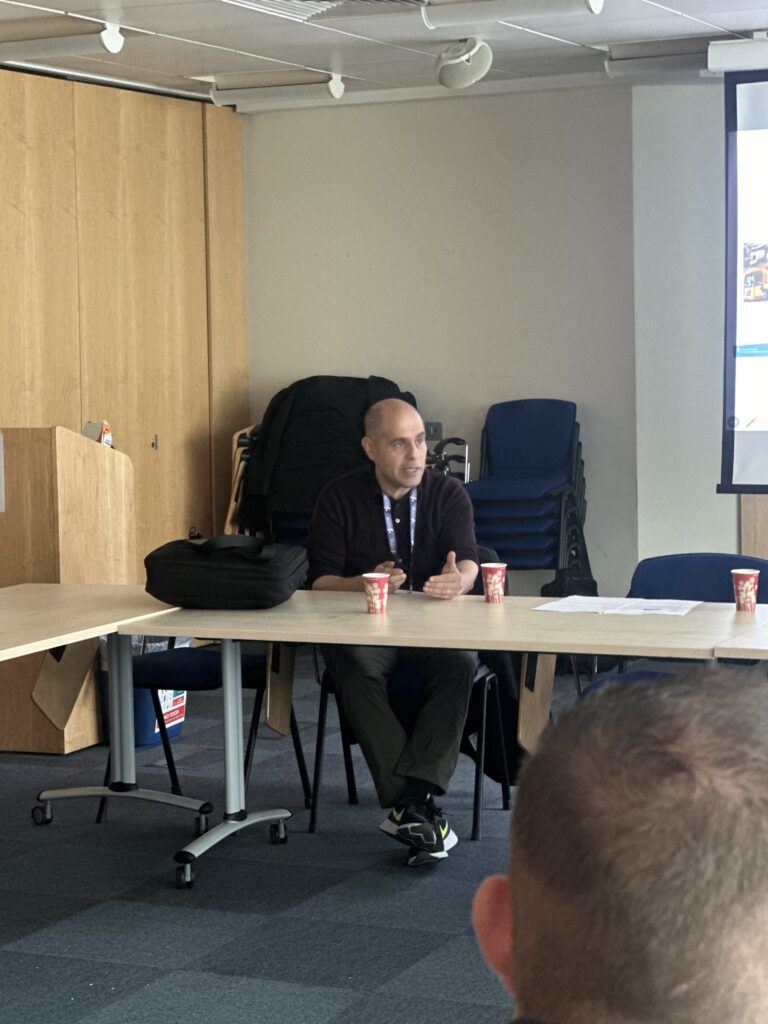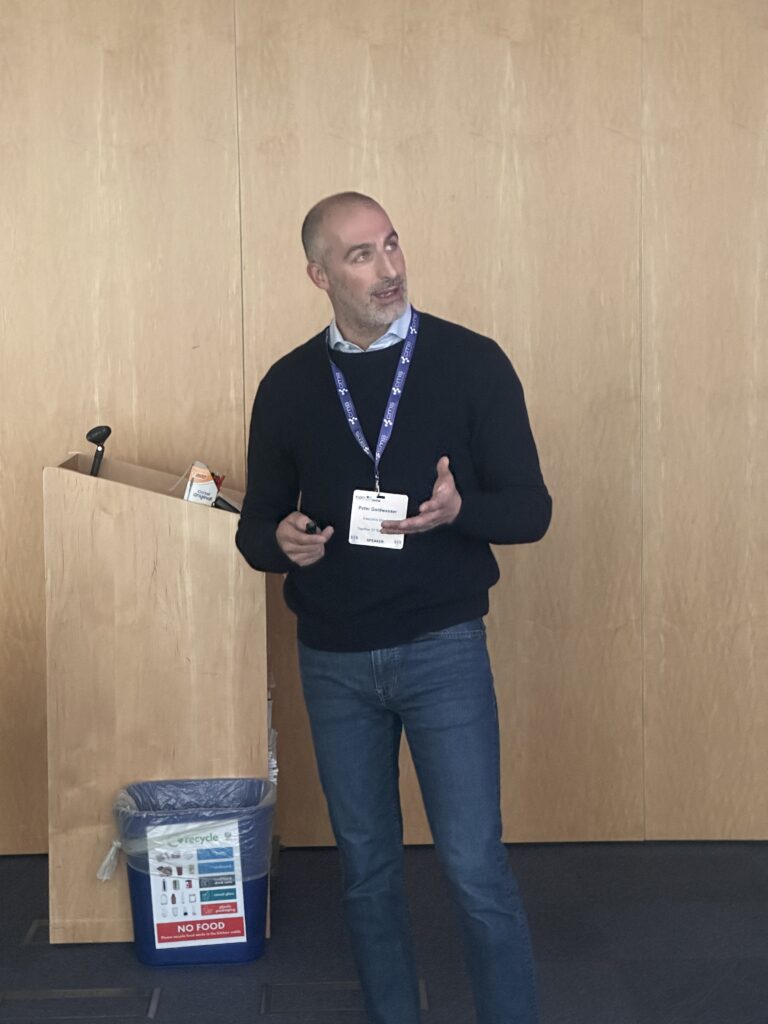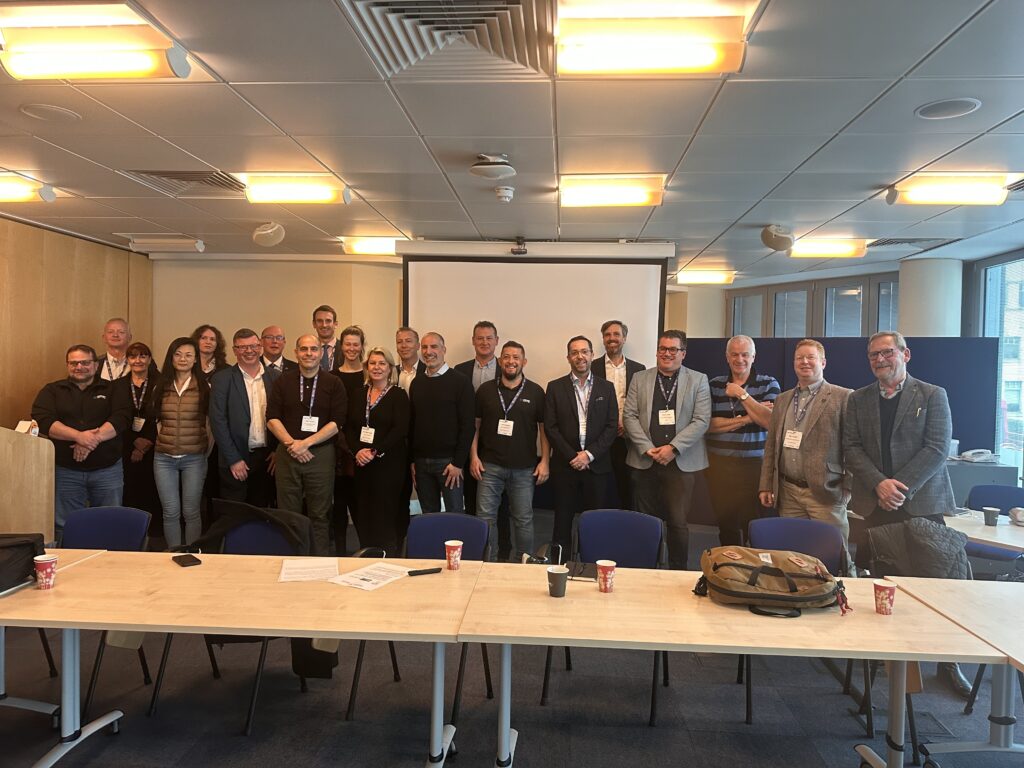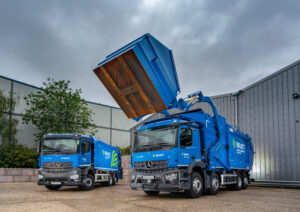As a precursor to Fleet Vision International ‒ THE SHOW, FVI hosted an international road safety session with the City of London Corporation, NYC DCAS, and Together for Safer Roads at the City of London’s offices at Walbrook Wharf on 10 April. The round table saw 23 representatives from the specialist fleet industry discuss how we can use international examples of best practices to make our fleets and roads safer for everyone. FVI reports.
‘There are very few issues in the world today that are as ubiquitous or that translate across the world in quite the same way as road safety,’ said Peter Goldwasser from Together for Safer Roads as he opened the Fleet Vision International – THE SHOW round table discussion on 10 April. ‘The specific interventions will change depending on the environment in which you work, but I firmly believe that our collective knowledge and experience will reveal many commonalities that can be applied in different communities. That’s why these kinds of conversations are so important.’
The round table event brought together representatives from the UK and US fleet sectors to discuss how to make our roads safer and the challenges participants face. It was immediately apparent that there are many common frustrations, not least of which was the difficulty of driving change when people resist the very safety policies designed to protect them.
Keith Kerman, Chief Fleet Officer for the City of New York, raised the issue of seatbelt use. NYC monitors and reports on seatbelt use, and rather than wear this life-saving safety feature, agencies have reported that a small number of drivers buy seatbelt buckles and plug them in to prevent their lack of seatbelt use from triggering an alert. This prompted an illuminating discussion about the challenges of enforcing seatbelt use in fleets. In the waste sector, for example, it was noted that many crews don’t wear seatbelts in vehicles.
‘It’s an interesting issue,’ said Peter, who said that TSR has considered multiple strategies that range from policy-driven interventions to low-tech solutions such as different coloured straps to make visual assessment of seatbelt compliance easier. However, he pointed out that you must understand the problem to solve it. ‘You won’t know why people aren’t wearing seatbelts unless you are talking to drivers.’
Charlie Everitt, Sales Operations Manager from Dennis Eagle, observed that legislation can only go so far. Dennis Eagle fits red seatbelts in both the UK and US to make it harder for people to get away with not wearing them. ‘But this is only effective as they drive out of the depot, not afterwards. If someone is determined not to wear a seatbelt, they won’t wear one.’
‘There can be remarkable resistance to change and safety implementation,’ agreed Keith Kerman. ‘And it’s not always clear why.’ For example, he cited that, at first, some city agencies opposed side guards on their trucks, even though it doesn’t even impact the drivers. The opposition was intense in some places. However, Keith notes that all City trucks now have side guards, even at those agencies, and NYC leads the nation in this implementation.
‘This is where storytelling is so important,’ said Peter Goldwasser. ‘You can have the best technology in the world, but if it is not implemented in a way that considers human concerns, it’s useless. From a change management perspective, it’s all about introducing new tech or policy changes.’ He used speeding as an example. ‘On the one hand, the city sees speeding fines as a cash grab. On the other hand, you are offering drivers a foolproof way of avoiding such fines – by not speeding. Messaging is huge.’
It’s not just a problem in the waste sector. Ben Copitch, Business Development Manager from Questar Autos, highlighted the issue of ambulance crews using seatbelts. ‘There are seatbelts in the back of ambulances, and not only should the patient be strapped onto the trolley, but the person working on them should also wear a seatbelt when seated. But there is a huge problem of paramedics not wearing them in the back of ambulances because they want to be available to help the patient if needed.’
Ben Copitch worked with London Ambulance and an insurance company on an educational video for paramedics that showed what happens to crash test dummies in the back of ambulances when they are not strapped in. ‘When people resist wearing seatbelts, the only way to counter it is through training and information.’
This view was upheld by various other participants at the round table. While the technology exists to detect seatbelt use or lack of it, such as driver-facing cameras, there is a lot of pushback against this type of solution. ‘In New York, for example, DCAS has installed telematics on all vehicles and has introduced some outward-facing car cams,’ Keith said. ‘But we are not installing inward-facing cameras, which would be far less acceptable to employees and would distract from the focus on safety.’
Instead, fleet managers should focus on winning the hearts and minds of their drivers, argued Kevin Barcroft, Academy Driver Trainer from CMS SupaTrak. ‘Do this through driver training. Don’t push drivers into doing something they don’t want to do. Encourage them by showing them why it is a good thing.’
Peter referenced research carried out by Transport for London a few years ago, where long-standing drivers were interviewed at the start of the Direct Vision project and expressed concern and resistance to new direct-vision cabs. ‘After they tried them, they changed their view because the vehicles were easier to get into and less stressful to drive because they could see the people around them.’
‘Higher entry cabs present more of an issue when it comes to seatbelts,’ said Darren Judd, Head of Fleet Development from Biffa, talking about the industrial/commercial sector. ‘We find we have a lot less compliance in these vehicles because drivers feel safer in them. When they are in a low-entry cab, it feels more like a car because it is lower to the ground. In the higher entry vehicles, they feel they have more protection around them. We need to change that mindset, and it’s not easy.’
It’s not always just drivers that are resistant to safety measures. Jason Airey from CMS SupaTrak pointed out that it took an astonishing 13 attempts to pass seatbelt laws in the UK, and one attendee said that some fleet managers also do not want to embrace changes in policy or technology. ‘We once worked with an emergency services fleet manager who was not interested in speeding or how his drivers behaved while behind the wheel. Fleet managers are the people who will cascade these changes down to drivers, and if the fleet manager doesn’t care, how do we convince them?’
‘Our focus programme is geared towards fleet managers and leadership because it’s all about a cultural shift, and if you don’t have top-down buy-in, it’s unrealistic to think you will get driver buy-in,’ agreed Peter Goldwasser. He suggested that in cases like this, what’s needed is a way to align the interests and issues of the fleet manager. ‘What is their concern, and how can you align it with their interests? If their concern is cost, will your safety measure be cheaper? Or perhaps it’s a way to make that person look good in front of their boss. It comes back to storytelling. We need to create stories that have impact.’
Ben from Questar Autos said that one of the most effective behaviour-changing training he has seen was a series of workshops run by one of the big vehicle rental companies that brought drivers together with the parents of someone killed on the road, using real stories to highlight the true impact of what can happen as a result of unsafe behaviours.
This is a strategy that NYC has also used with its ‘Drive like your family lives here’ campaign, featuring families of those killed in the city. ‘We also ran an event with the Department of Health where ER doctors talked about what happens when safety measures fail and the victims of crashes end up in their care,’ said Keith. ‘Stories matter a lot. In our training, we use real events. The recent Mayoral executive order on high-vision trucks was motivated by real tragedies. You have to use a crisis because you can’t always get the political will for change without one. More often than not, culture change moves on crisis.’
Jason Airey, MD from CMS SupaTrak, added that engaging with OEMs in issues like this is essential. ‘The technology is there to determine whether or not someone is wearing a seatbelt, but OEMs are not offering it. If as customers we say we would like these features as standard, they will have to make them available.’
‘The easiest way to engage with OEMs is through legislation,’ said Charlie Everitt from Dennis Eagle. He mentioned the EU’s General Safety Regulations as an example. And the Direct Vision Standard is another case of legislation changing behaviour and technology at all levels.
However, James Newhill, Global Sales Director for Ogden Safety Systems, expressed concern over the proliferation of safety system suppliers and products as a result of the implementation of the standard. ‘Some of these are substandard systems that cause more danger when fitted than not having any system fitted at all.’ Transport for London does not recommend any particular products or suppliers, and James asked Keith Kerman how NYC deals with this issue.
‘We have a testing process that goes on, and we are actually about to publish something with TSR involving testing technologies in the surround camera field,’ said Keith. ‘This will attempt to answer two questions: does the technology work, and which type of technology is effective? With side guards, we have certified vendors and installers, and we aim to provide, as far as possible, a resource that assesses these technologies and gives some guidance on what works and what to look out for. This is our Safe Fleet Transition Plan published with US DOT Volpe.’
In closing, Peter Goldwasser reflected on the fact that the discussion demonstrated that safety is an issue that necessitates collaboration. ‘It’s clear that if we are to move the needle on road safety, we must consider policy and technology, human concerns, and real-life use and behaviours. When you have an issue of such importance, like seatbelts, it might seem like things will happen because they are the right thing to do, but that is not the case. These issues must be tackled from various angles, with many different partners, and we have to learn from each other’s national and international experiences because everyone has something to contribute in the drive for change.’







